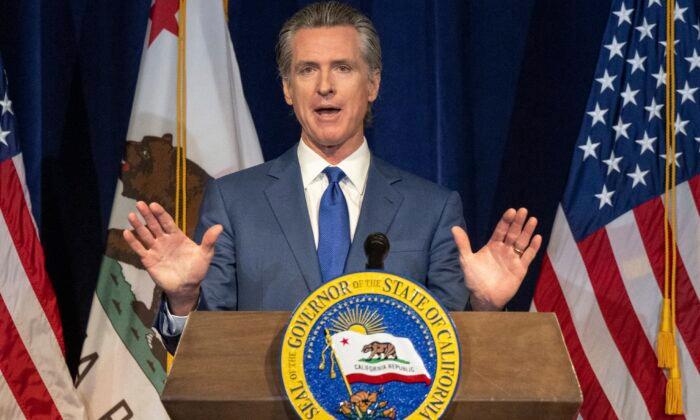The May Revise, as it’s called in Sacramento parlance, flips the prior year’s surplus of almost $100 million—yielding a reversal of about $130 billion.

In the May Revise, general-fund spending is $224.1 billion—virtually the same as the $223.6 billion in his January proposal. So that still amounts to about 7.10 percent of the income of Californians. That remains well above the 6.2 limit I identified, and “above average historical levels” as described by the LAO.
However, the governor’s new document does not concede this possibility, anticipating, “The May Revision forecast projects the U.S. economy to grow slowly through the third quarter of 2023, with U.S. real GDP growth averaging 0.5 percent in the second and third quarters amidst tighter financial conditions.”
- Spending cuts rise $1.1 billion to $6.7 billion.
- Trigger reductions—such as to transportation and other initiatives—remain at $3.9 billion.
- Spending delays for some programs are increased by $695 million to $8.1 billion. For example, $295 for the Foreclosure Intervention Housing Prevention Program is moved to “out-years.” Effectively, delays really are cuts, because one Legislative session cannot bind a future session.
- Fund shifts, such as $1.1 billion in housing spending to bonds, amount to $3.3 billion.
- An additional $2.5 billion will come from the Managed Care Organization tax—a tax increase.
- Special funds borrowing increases $1.2 billion.
- The Safety Net Reserve is hit with a $450 million withdrawal.
- Except for the Safety Net Reserve withdrawal, no other reserves are used, keeping total reserves at $37.2 billion. And, “As the Budget Stabilization Account balance is at its constitutional maximum amount, a total of $2.3 billion must be dedicated for infrastructure investments in 2023-24.”
Education Spending
K-12 education always is the biggest budget spending component. Proposition 98 mandates it gets about 40 percent of general-fund spending.The May Revise writes: “The May Revision includes total funding of $127.2 billion ($79.1 billion General Fund and $48.1 billion other funds) for all K-12 education programs.” That’s virtually the same as the $128.5 billion in his January budget.
I’ll spare you the math, but in the May Revise, that drops just a little, to $23,483 per pupil. Just $240 less.
Consider this word salad from the new budget, written in what’s called “edubable”:
“The May Revision repurposes modest portions of the funding previously provided to support the Arts, Music, and Instructional Materials Block Grant and the Learning Recovery Emergency Block Grant to support the Local Control Funding Formula. With these changes, the state is reasonably positioned to sustain the continued multi-year implementation of the California for All Kids plan—a whole child framework to close opportunity gaps by accelerating learning and investing in the educator workforce while providing universal access to early learning, before and after school care, comprehensive nutrition services, and increasing the number of community schools in high-needs communities.”
How about just giving that $23,483 to parents to spend on a school voucher at the best school for their individual kids? Naaaaah. That would mean the end of the state’s most powerful political force, the California Education Association.
Conclusion
After COVID, the budget deficit is the biggest challenge Newsom has faced in his four years as governor. He can’t run for governor again. So he’s now obviously focused on getting the voters to promote him to the White House, either in 2024 or 2028.If, as I have indicated, more cuts need to be made, instead of making them he could dip into those tempting $37.2 billion in reserves.
Now the budget goes to the Legislature, where there will be resistance even to the inadequate cuts the governor wants to make. The constitutional deadline to pass a budget is June 15, but that’s hard to enforce. Expect a lot of drama and posturing.





